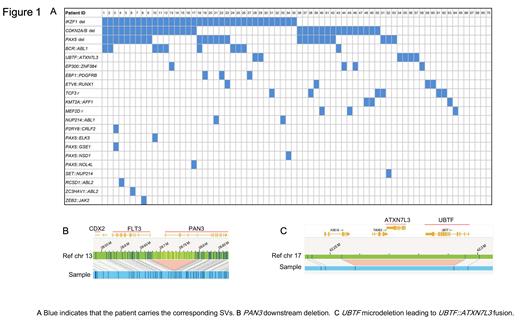Introduction
Structural variants (SVs) of the genome play a key role in the leukemogenesis and development of B cell lymphoblastic leukemia (B-ALL), including gene deletion, amplification, translocation, and other forms. Methods for analyzing SVs and CNVs include karyotype analysis, fluorescence in situ hybridization, gene chips, and high-throughput gene sequencing technologies. Optical genome mapping (OGM) is a novel ultra-long single-molecule DNA detection based high throughput SVs analysis technology, which has the characteristics of whole genome coverage, high detection incidence and sensitivity. There were few publications presenting technical concordance of SVs detection beween karyotyping and OGM, and there are no systematic studies comparing the concordance of OGM and RNA-seq in detecting gene fusion. This study aimed to compare the concordance of OGM and RNA-seq in the detection of fusion genes in B-ALL cases, and the additional findings using OGM technology.
Methods
Bone marrow aspirates of 70 patients with newly diagnosed or relapsed/refractory B-ALL were recruited into the study. All samples were conducted with both OGM and transcriptome sequencing (RNA-seq). Among these cases, 42 males and 28 females, 30 pediatric (< 18 years) and 40 adults (≥ 18 years) cases, ages ranged 4-60 years (median 16 years).
Results
Totally 50 gene fusions were reported in 48 cases, with 2 cases each carrying two fusion genes ( BCR::ABL1/ PAX5::ELK3 and P2RY8::CRLF2/ PAX5::GSE1, respectively) (Figure 1A). OGM and RNA-seq have complete concordance in reporting gene fusions, and OGM provides further insight into the genomic events that lead to gene fusion.
A subtype of B-ALL characterized by UBTF microdeletion leading to UBTF::ATXN7L3 fusion and PAN3 downstream deletion-induced CDX2 aberrant expression has been reported recently, and has been accepted by the International Consensus Classification as a novel molecular subtype of UBTF/CDX2 of B-ALL. We performed the OGM investigation on 6 UBTF/CDX2 cases which were identified by RNA-seq. OGM identified both microdeletion events in all 6 cases, and further reported 1q amplification in 3 of them (Figure 1B, C).
B-lymphocyte differentiation-associated transcription factor gene defects are common and important genetic abnormalities in B-ALL, often manifested as complete or partial deletion of genes. We focused on a panel including 30 genes in the OGM data and determined IKZF1 deletion in 35 patients, CDKN2A/B deletion in 32 patients, and PAX5 deletion in 25 patients (Figure 1 A). Follow-up data showed that patients with CDKN2A/B deletion had a worse prognosis than those without CDKN2A/B deletion ( P = 0.025).
Conclusion
This is the first B-ALL cohort to systematically compare OGM and RNA-seq in gene fusion detection, and the result showed complete consistency. RNA-seq has significant advantages in analyzing gene fusion transcripts, while OGM has technical advantages in analyzing SVs at the genome level. Combining the two technologies can accurately analyze gene fusion and other SVs in B-ALL, significantly improve the detection rate of SVs with important pathological/diagnostic classification significance, and may bring new discoveries on SVs and pathogenic mechanisms.
Disclosures
No relevant conflicts of interest to declare.


This feature is available to Subscribers Only
Sign In or Create an Account Close Modal